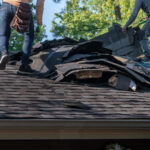AM Best said it has revised its outlook for the U.S. homeowners segment to negative from stable following three consecutive years of net underwriting losses as a result of above-average numbers of natural catastrophes, inflationary pressures and elevated reinsurance costs.
Homeowners carriers are being challenged by more frequent secondary weather perils as well as higher retentions and co-participation, according to the report titled “Market Segment Outlook: US Homeowners.”
Rising loss costs, inflation and supply chain disruptions are also making it difficult to maintain rate adequacy, leading several market leaders to curtail new business in catastrophe-exposed states, the report said.
“Going forward, homeowners carriers will find it difficult to absorb these underwriting pressures while strengthening their balance sheets. A return to underwriting profitability over the near term appears highly unlikely,” said Maurice Thomas, senior financial analyst, AM Best, in a statement accompanying the report.
AM Best said overall risk-adjusted capitalization remains solid for most companies due to their risk management best practices and that “vigilant” companies have been pushing for increases where pricing is inadequate.
However, AM Best noted that the capital cushion for some insurers – especially those in catastrophe-exposed areas – has started to erode following persistent underwriting losses in recent years.
“With companies increasing their reinsurance retention and co-participation levels because of reinsurance market conditions, cat activity is having a larger negative impact on results.”
Meanwhile, AM Best said technology adoption is accelerating, accompanied by improved catastrophe risk management practices.
“In light of the evolving risk environment, insurers have accelerated their shift to digital technology and intensified their focus on product innovation,” the report said, explaining that the homeowners line deals with large homogeneous risks, so initiatives can be scaled and replicated relatively easy.
“Pricing sophistication has helped carriers in their pursuit of rate adequacy. By leveraging proprietary underwriting models and technology platforms, top performers have been able to customize coverage for the right price,” AM Best continued.
“New technologies can strengthen risk selection and mitigation, enhance claims processing, lower expense and service costs, and improve product offerings.”
By maintaining their focus on rate adequacy, technology adoption and catastrophe risk management, carriers in the homeowners segment may find more earnings stability goingforward, AM Best indicated.





















 Executives on the Move at Liberty Mutual, Cowbell, W. R. Berkley
Executives on the Move at Liberty Mutual, Cowbell, W. R. Berkley  How Insurers Can Avoid Post-Merger Technology Failure
How Insurers Can Avoid Post-Merger Technology Failure  Why ‘Good Enough’ Is Killing Insurance: The Hidden Cost of Satisficing
Why ‘Good Enough’ Is Killing Insurance: The Hidden Cost of Satisficing  Surge of Supercharged Hurricanes Prompt Call for Cat 6 Classification
Surge of Supercharged Hurricanes Prompt Call for Cat 6 Classification 





